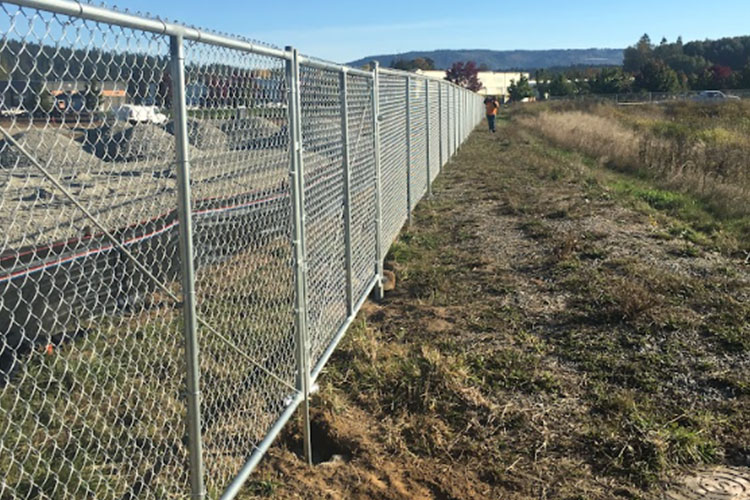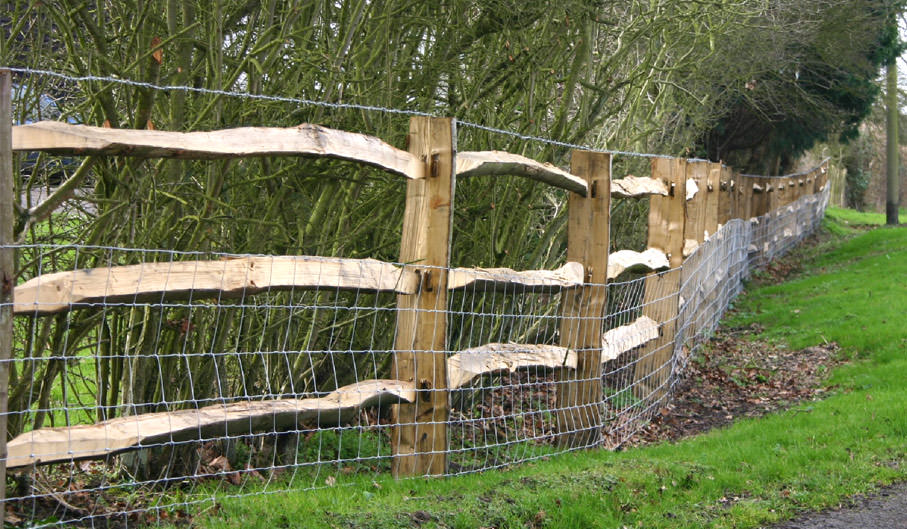How to Add Character With Help From a Trusted Fence Company
How to Add Character With Help From a Trusted Fence Company
Blog Article
A Comprehensive Overview to Fencing Install: What You Required to Know Regarding Fencing Services
When it comes to installing a fence, you have actually obtained a great deal to consider. You'll require to examine your property and make a decision if you desire to take on the installment yourself or employ a professional.
Recognizing Different Kinds of Fence Materials
When you're selecting a fence, recognizing the different sorts of fencing materials is necessary. Each product provides unique advantages and downsides, affecting your decision. Wood offers a traditional look and can be customized, yet it requires regular upkeep and might rot with time. Plastic is low-maintenance and resilient, resisting fading and insects, yet it can be pricier upfront. Chain-link secure fencing is affordable and useful for enclosing big locations, though it does not have personal privacy and aesthetic charm. Metal secure fencing, like wrought iron or light weight aluminum, offers strength and elegance yet might need corrosion defense. Compound products mix the very best of timber and plastic, using durability with an all-natural look. Consider your spending plan, desired visual appeals, and maintenance choices when examining these choices. Inevitably, picking the ideal material will aid you develop a fencing that meets your needs and boosts your residential property's worth.
Analyzing Your Building and Secure Fencing Needs
Prior to you start your fencing setup, it's important to analyze your home boundaries and the purpose of your fencing. Comprehending regional regulations and authorizations will also help you stay clear of any kind of legal issues down the line. By considering these aspects, you'll guarantee your fence meets both your demands and community standards.
Home Boundaries and Lines
Understanding your home boundaries is necessary for an effective fence setup, as it not just assists you figure out where your fence will go but likewise assures you're valuing your neighbors' space. Beginning by examining your residential or commercial property deed or study, which typically describes the specific boundaries. You might also wish to talk to an expert property surveyor if you're uncertain.
Bear in mind, local zoning regulations might dictate fence placement and height, so check those regulations also. Taking these steps guarantees your fencing is effectively positioned and certified, making the entire procedure smoother for you.
Objective of Fence
Fencing serves numerous functions that can significantly improve your residential or commercial property. Initially, it offers security by developing an obstacle that discourages trespassers and shields your personal belongings. Second, it provides privacy, allowing you to enjoy your outdoor space without stressing over spying eyes. Third, fence can specify your building boundaries, making it clear where your room finishes and your neighbor's starts. Furthermore, it can boost the visual charm of your home, including character and style while increasing visual allure. A well-placed fence can help manage sound from nearby roads or neighbors and even maintain pets and kids risk-free. By assessing your specific requirements, you can choose the ideal sort of fencing to attain these benefits properly.

Local Rules and Permits
Just how can you assure your fencing installment complies with neighborhood regulations? Some locations require authorizations for any kind of new fencing, while others may just need them for taller frameworks.
Additionally, consider property lines and any easements on your land. Marking your borders can prevent conflicts with next-door neighbors or potential lawful issues. By understanding these regulations in advance, you can avoid pricey mistakes and determine your fence is built to last, improving both your building's value and your comfort.
Local Laws and Permits for Fence
Prior to you begin your fence task, it is very important to check local laws and get any needed licenses. Each city or area has its very own guidelines relating to fence elevation, materials, and positioning. These laws ensure that your fence abides by safety requirements and community appearances.
You could need to send a fencing strategy, detailing dimensions and products. Some locations may also call for a survey to verify property borders.
Ignoring to follow these laws can cause penalties or compelled elimination of your fencing, losing both money and time. So, put in the time to study and secure the appropriate authorizations for a smooth setup process. This action is important in making certain your project aligns with neighborhood regulations and area criteria.
Choosing In Between DIY Setup and Professional Solutions
Are you considering whether to tackle the fencing installment yourself or work with an expert? This choice pivots on several factors. Initially, examine your skill degree. If you're useful and have experience with comparable tasks, DIY might save you cash. Nonetheless, be truthful about your capacities; blunders can lead to extra costs and headaches.
Setting up a fence takes time, and if you're handling an active schedule, employing a specialist can ensure it gets done effectively. If your lawn has challenging surface or certain style requirements, experts bring know-how that can make a distinction.
Last but not least, consider neighborhood policies. A specialist knows the authorizations and codes needed, helping you avoid prospective fines. Inevitably, weigh your skills, time, complexity, and policies to make the ideal selection for your secure fencing project.
Step-by-Step Guide to Fencing Installation
When you've made a decision to progress with your fencing installment, adhering to a structured detailed approach will guarantee a smooth process. Begin by marking the fence line with stakes and string to imagine the layout. Next, inspect neighborhood laws to validate conformity with elevation and home lines.
Dig blog post openings a minimum of 2 feet deep, spaced according to your fencing kind-- normally 6 to 8 feet apart. Place the articles into the openings and fill them with concrete for stability. Once the blog posts are set, affix the horizontal rails or panels, making sure they're level.
Check for any type of loose connections and make essential changes. Your fence should now be ready to improve your residential property and supply the privacy or protection you require!
Upkeep Tips for Durability of Your Fence
To keep your fencing looking excellent and enduring longer, normal maintenance is essential. You need to establish a cleansing timetable, examine for any type of damage, and apply safety coatings as needed. By remaining positive with these jobs, you'll ensure your fence remains durable and eye-catching for years to come.
Normal Cleansing Set Up
While it could be simple to overlook, establishing a regular cleansing timetable is crucial for you can try here keeping the long life of your fencing. Start by rinsing your fence with water at the very least as soon as every season to eliminate dust and debris. For wooden fencings, utilize a mild soap remedy and a soft brush to scrub away any kind of mold or mildew. Do not fail to remember to look for any kind of corrosion on steel fences; a cable brush can assist remove it, adhered to by a layer of rust-resistant paint. If you reside in an area with hefty pollen or dirt, you may want to enhance your cleansing regularity. Maintaining your fencing clean not just enhances its appearance yet additionally extends its life, conserving you cash over time.
Examine for Damage
Routinely checking your fence for damages is crucial if you want to preserve its stability and durability. Begin by walking around your fence to look for noticeable signs of wear, such as cracks, loose boards, or corrosion. Inspect for any indicators of bugs, like termites or woodpeckers, that might endanger your fencing's structure.
Apply Safety Coatings
After examining your fencing for damages, applying protective coverings is a key action in guaranteeing its durability. Depending on the product, you'll intend to select the best kind of layer. For wooden fencings, a top quality sealer or wood tarnish can prevent dampness absorption and prevent pests. If your fencing is plastic or steel, think about a UV-protective spray or paint to avoid fading and rust.
Make certain to clean the surface area thoroughly prior to application, as dirt and crud can undermine the layer's efficiency. Use the covering in dry weather condition for better adhesion, and do not forget to follow the supplier's directions for the best results. Frequently reapply every few years to maintain your fencing looking wonderful and standing strong versus the elements.
Price Factors To Consider and Budgeting for Your Fencing Task
When planning your fence project, comprehending price considerations is vital to remaining within spending plan. Start by determining the type of material you want, as expenses can differ greatly in Get More Information between timber, vinyl, and metal. Do not fail to remember to variable in labor costs-- employing specialists could conserve you time but can enhance your general expenses.
Next, determine your residential property to determine the go right here direct video footage needed, as this straight effects material costs. Additionally, take into consideration any type of licenses you might require, which can include in your budget.

Last but not least, it's a great concept to allot a contingency fund for unforeseen expenditures. By intending carefully and taking into consideration these elements, you can produce a sensible spending plan that satisfies your fence needs without damaging the financial institution.
Frequently Asked Concerns
How much time Does the Typical Fence Installation Take?
The standard fencing setup normally takes one to three days, depending upon the fencing kind and dimension of your backyard. You'll need to take into consideration any type of delays due to weather or permit requirements as well.
What Should I Do if My Fence Is Damaged?
If your fencing is harmed, initially analyze the level of the damages. Repair small concerns yourself, yet for significant troubles, take into consideration contacting a professional. Don't wait as well long; it'll assist stop additionally issues.
Can I Set Up a Fence on a Slope?
Yes, you can install a fence on an incline. You'll need to adjust your installment method, either by tipping the panels down or making use of a racked style to ensure security and appropriate placement with the terrain.
What Are the most effective Practices for Fencing Paint?
To paint your fence properly, begin with proper cleansing and sanding. Use premium paint and use in even strokes. Don't fail to remember to select the appropriate weather condition for painting, ensuring it's completely dry and mild.
How Usually Should I Inspect My Fence?
You ought to inspect your fencing a minimum of two times a year, concentrating on indications of damage, rot, or rust. Routine checks aid you catch issues early, guaranteeing your fencing remains sturdy and aesthetically attractive much longer.
Report this page